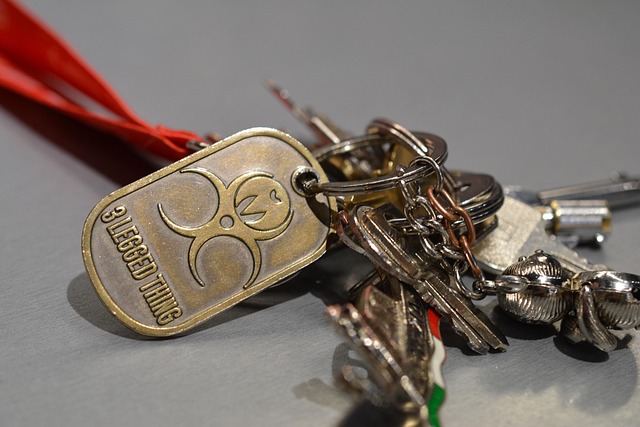In isolated rural areas with limited infrastructure, long-range surveillance cameras provide a game-changing security solution. These advanced devices offer remote access to real-time footage, allowing homeowners to monitor their properties from anywhere. With features like night vision and motion detection, they enhance safety and deter crime, reducing break-ins and theft risks. Installation involves selecting reliable camera systems with high-quality transmission, strategic placement, robust broadband connectivity, and regular software updates. Balancing security and privacy requires secure data protection measures, limited access, encryption, and responsible handling of user data.
In isolated rural homes, ensuring security and peace of mind can be challenging due to limited access to traditional monitoring systems. This article explores remote-access surveillance as a game-changer for these communities. We delve into the growing need for robust security measures in rural settings, highlighting the advantages of long-range surveillance cameras. From implementation strategies to privacy concerns, it provides an all-encompassing guide on how these innovative systems can revolutionize safety without compromising solitude.
- Understanding the Need for Remote Surveillance in Rural Settings
- The Benefits of Long-Range Surveillance Cameras
- Implementing and Setting Up Remote Access Systems
- Privacy Considerations and Security Measures for Rural Homes
Understanding the Need for Remote Surveillance in Rural Settings

In isolated rural homes, security and peace of mind are paramount concerns for residents. Traditional surveillance systems often fall short due to geographical challenges and limited infrastructure in these areas. This is where long-range surveillance cameras come into play as a game-changer. These advanced devices bridge the gap by offering remote access to real-time security footage from virtually any location, even the most remote rural settings.
With long-range surveillance cameras, homeowners can monitor their properties from the comfort of their homes or even while traveling far away. This technology is especially crucial for rural areas where immediate response times for emergencies might be longer due to distances and limited local law enforcement presence. By providing continuous observation, these cameras enhance safety and deter potential criminals, contributing to a quieter and more secure environment for folks living off the grid.
The Benefits of Long-Range Surveillance Cameras

Long-range surveillance cameras offer a myriad of benefits for isolated rural homes, addressing security concerns in ways traditional systems often cannot. Their primary advantage lies in their ability to capture clear images and footage from significant distances, eliminating the need for physically proximity to monitor activities. This is particularly valuable in remote areas where response times for emergency services can be longer, ensuring peace of mind for homeowners.
Moreover, these cameras enhance property visibility, deterring potential intruders. Their advanced technology often includes features like night vision, motion detection, and high-resolution imaging, enabling round-the-clock surveillance even in low-light conditions. This proactive approach to security can significantly reduce the risk of break-ins or theft, providing a sense of safety and protection for rural communities.
Implementing and Setting Up Remote Access Systems

Implementing remote access systems for long-range surveillance cameras in isolated rural homes involves several key steps. Initially, homeowners should choose a reliable camera system that offers high-quality video and audio transmission over long distances. This ensures clear visuals and real-time monitoring of their properties. Once selected, the next step is to install the cameras strategically, positioning them to cover crucial areas like entry points, fields, and surrounding perimeters.
Setting up these systems requires proper network infrastructure. Homeowners might need to enhance their internet connectivity by installing a robust broadband connection or even exploring satellite options for remote locations. After establishing a stable connection, users can configure the cameras through intuitive mobile apps or web interfaces, allowing them to access live feeds and recorded footage remotely. Regular software updates and security measures are also crucial to maintaining the integrity of these systems.
Privacy Considerations and Security Measures for Rural Homes

In rural settings, where homes are often situated in vast, isolated landscapes, implementing remote access surveillance is a double-edged sword. While long-range surveillance cameras offer enhanced security and peace of mind for homeowners, it also raises significant privacy considerations. The key to striking a balance lies in adopting robust security measures that safeguard personal data and ensure the system operates within legal boundaries.
Homeowners can protect their privacy by configuring camera settings carefully, limiting access to authorized individuals, and employing encryption techniques to secure video transmissions. Regularly reviewing and updating privacy policies, along with educating family members and visitors about the surveillance system, further reinforces a culture of responsible data handling. Additionally, selecting reputable service providers who adhere to strict security protocols is essential for maintaining the integrity of the entire remote access surveillance setup.
In isolated rural homes, ensuring security and peace of mind has never been more important. Long-range surveillance cameras offer a modern solution, providing remote access to real-time footage that can deter crime and monitor unusual activities from afar. By implementing these advanced systems, homeowners can take control of their safety without compromising privacy. With the right setup and robust security measures in place, rural living can be both secure and enjoyable.
